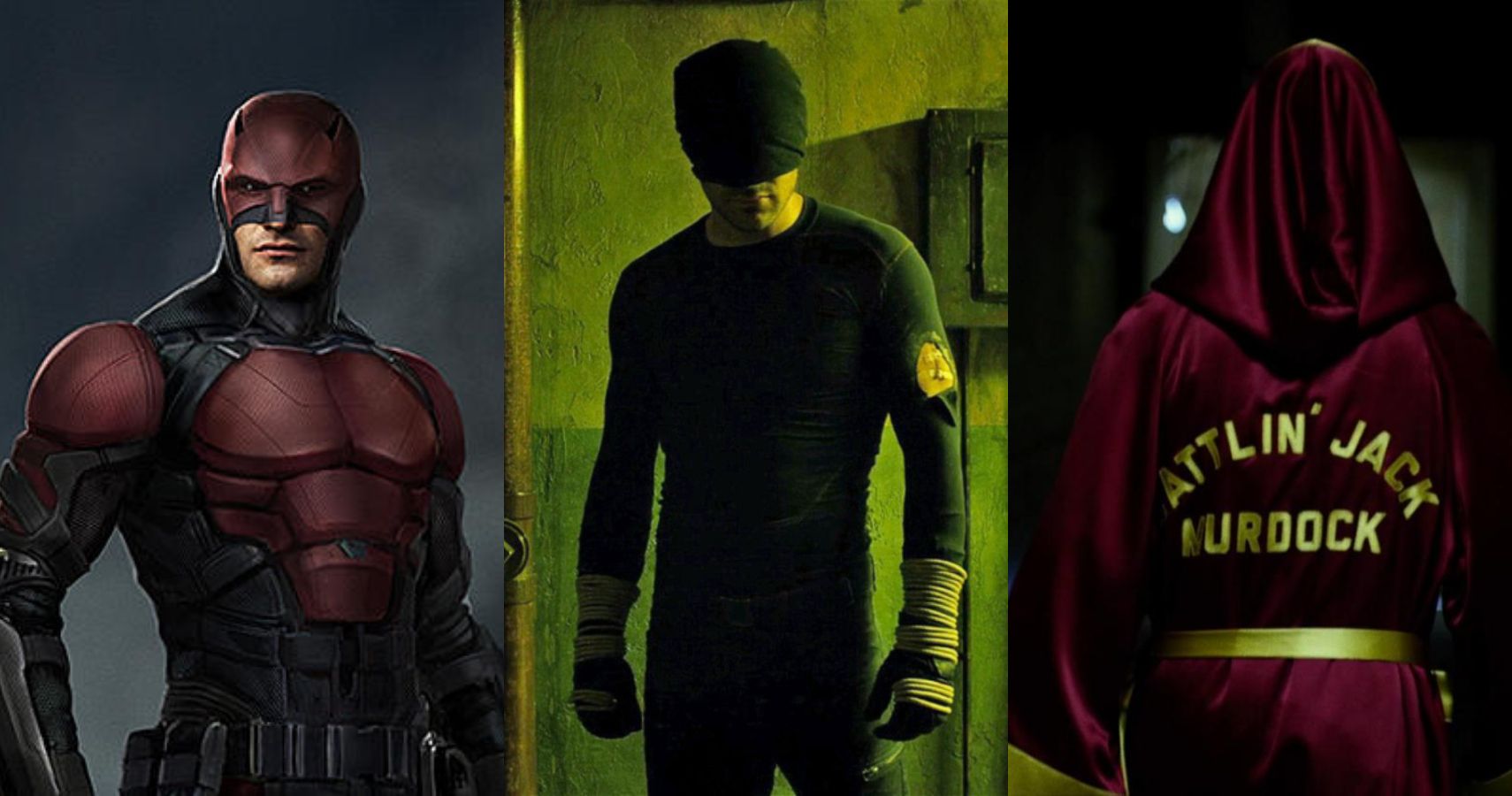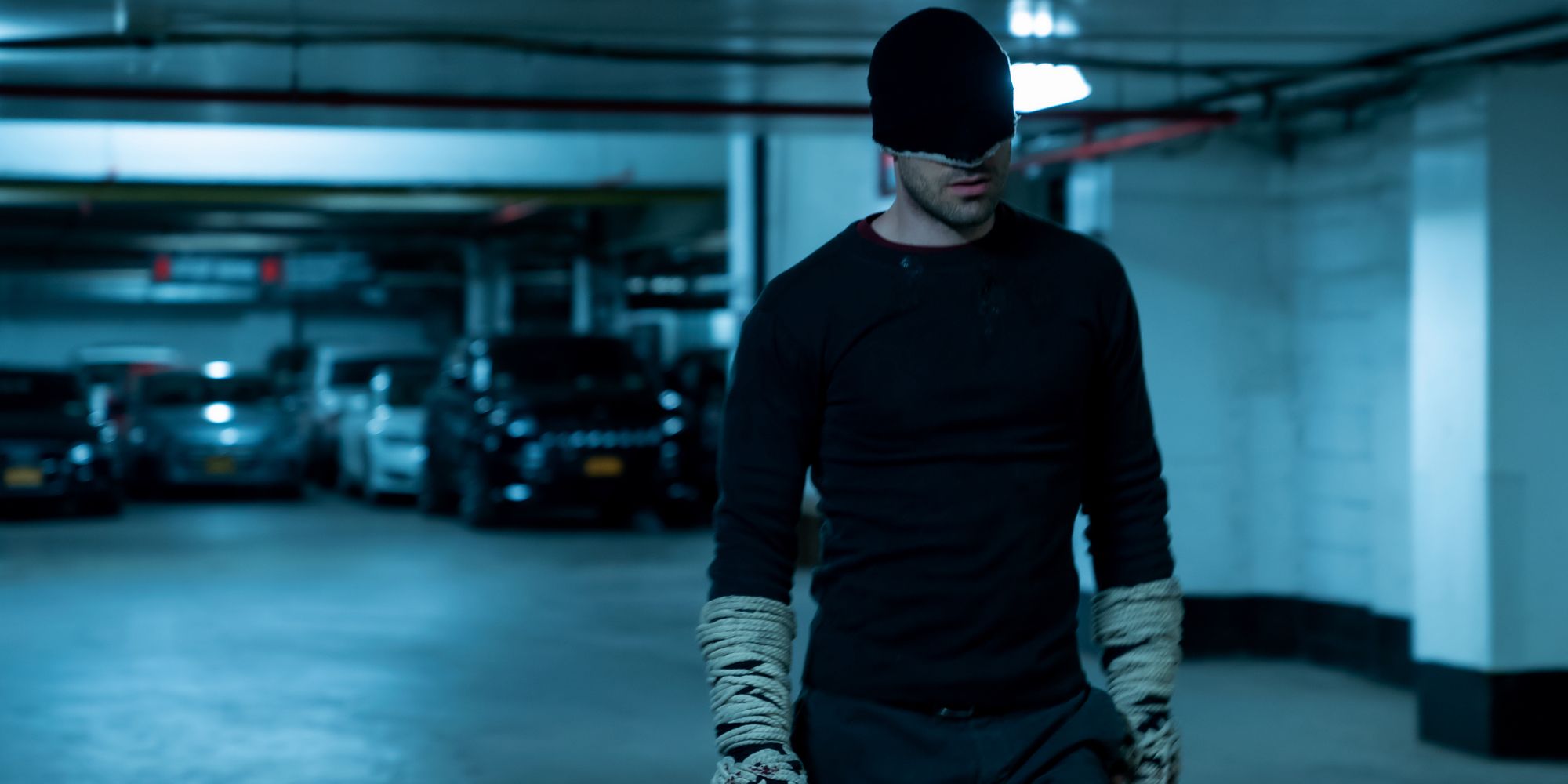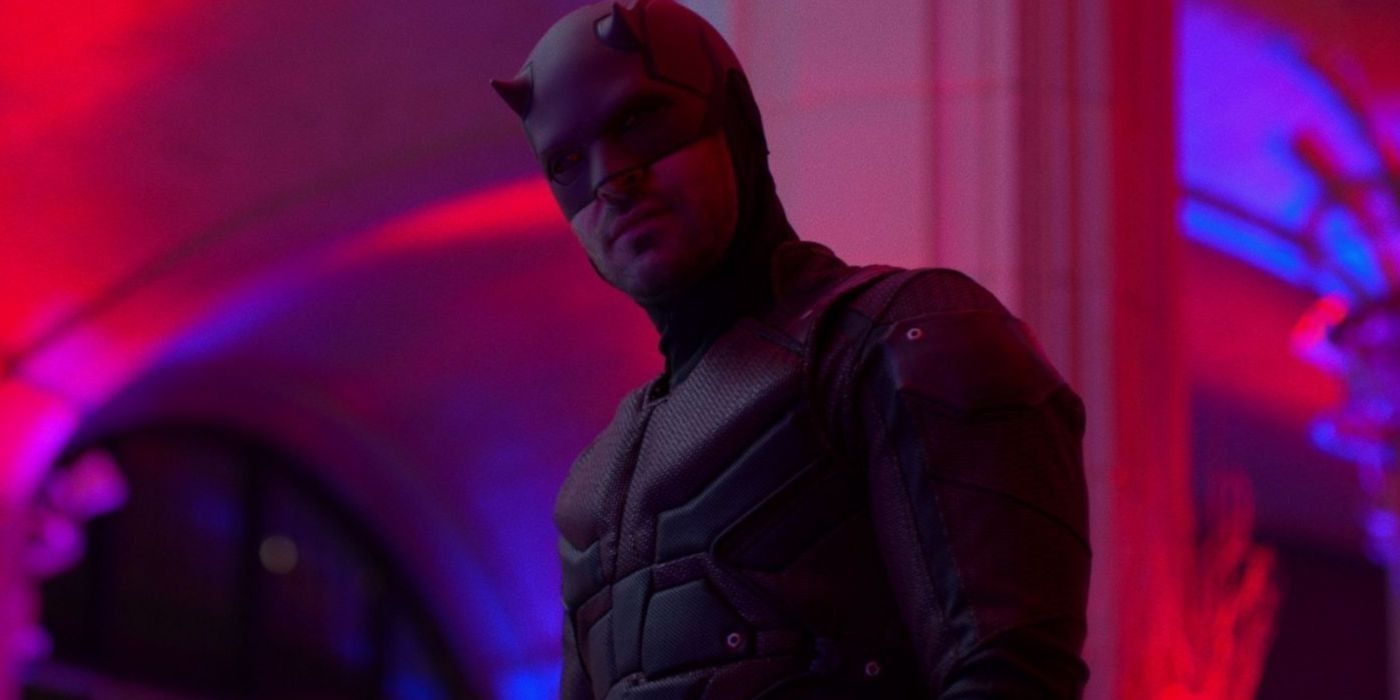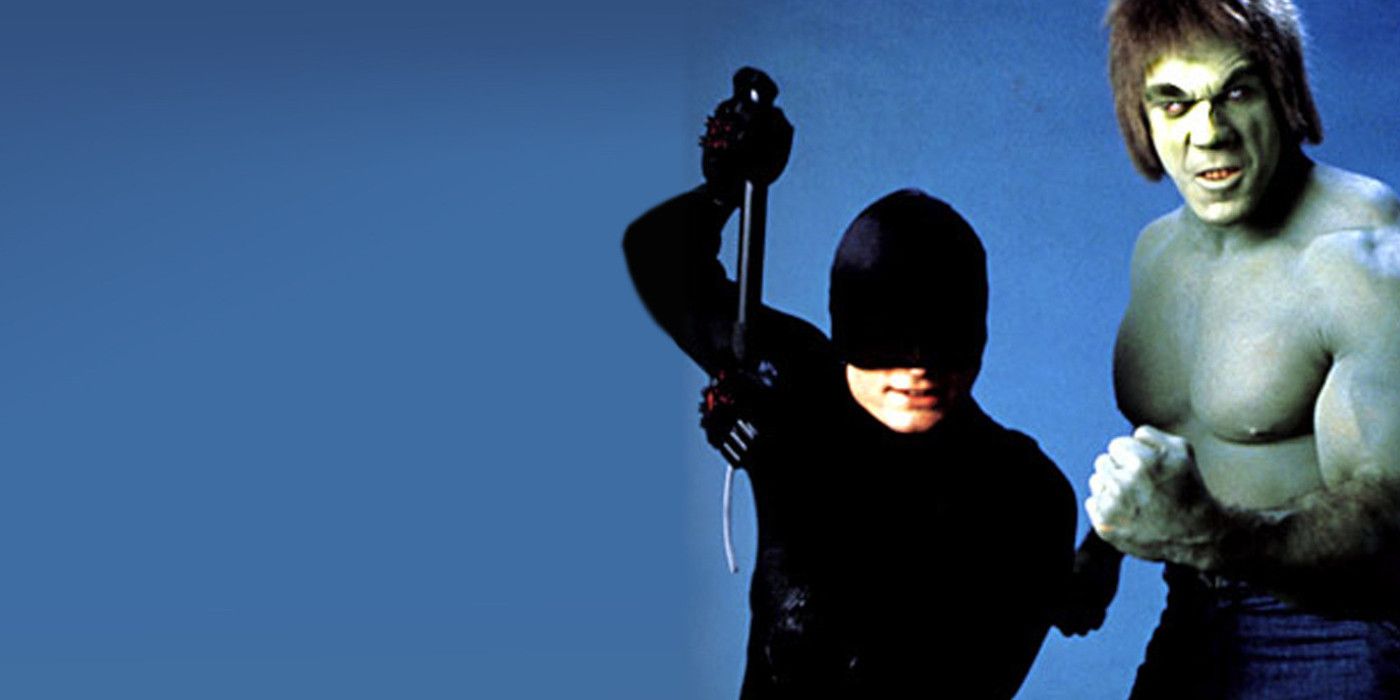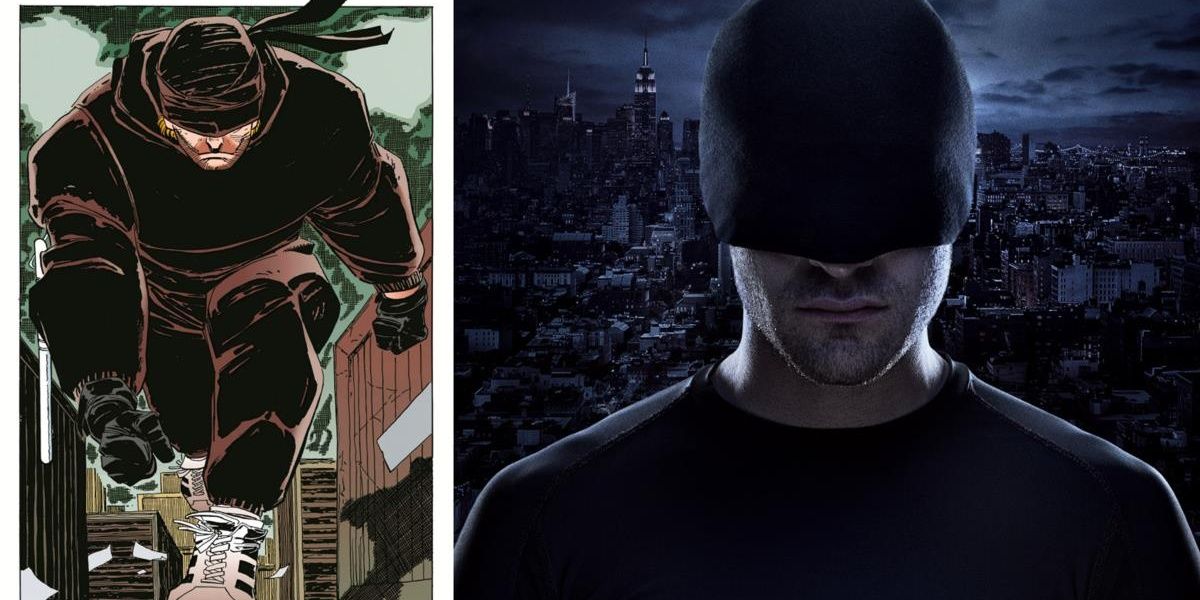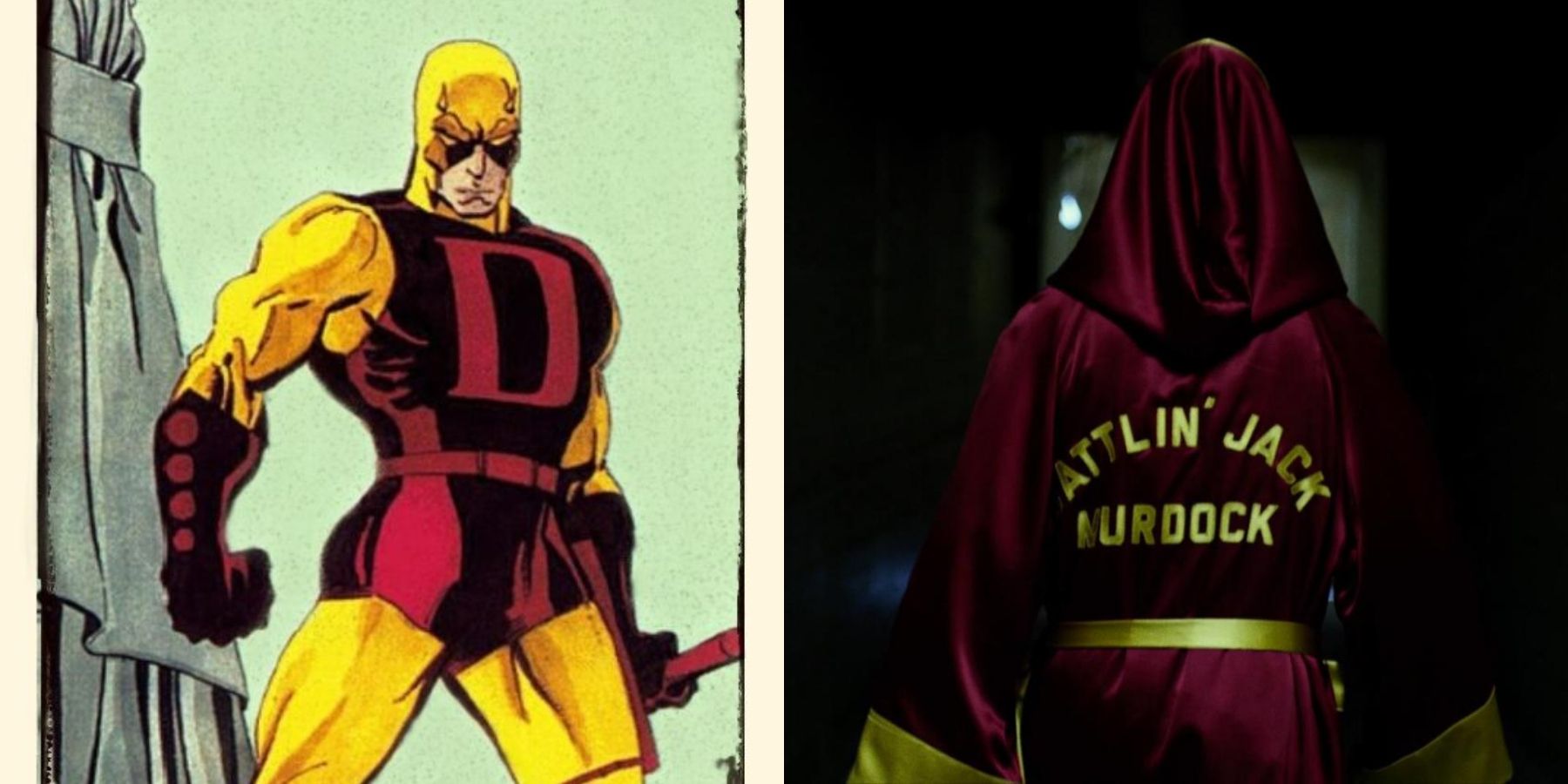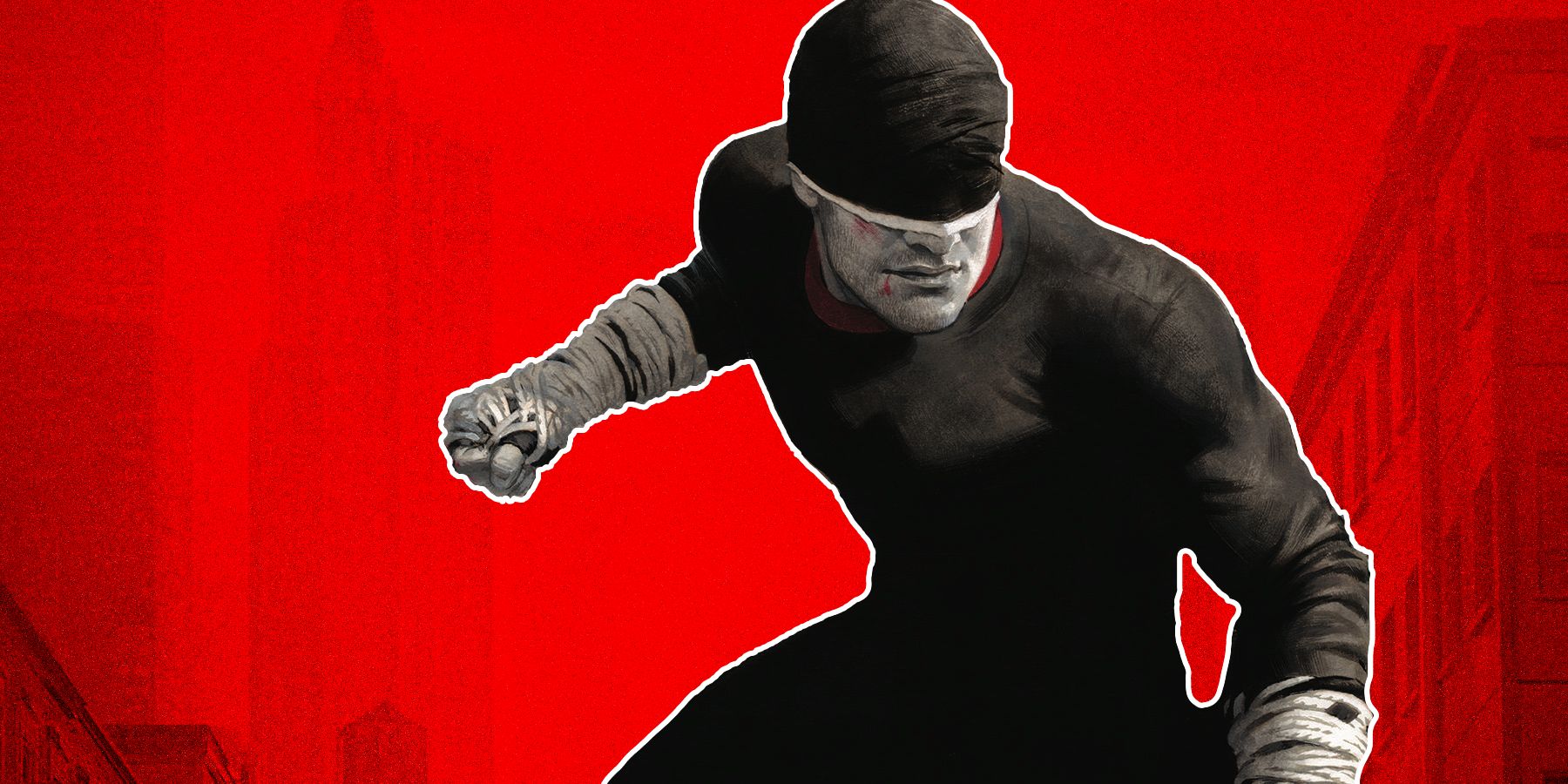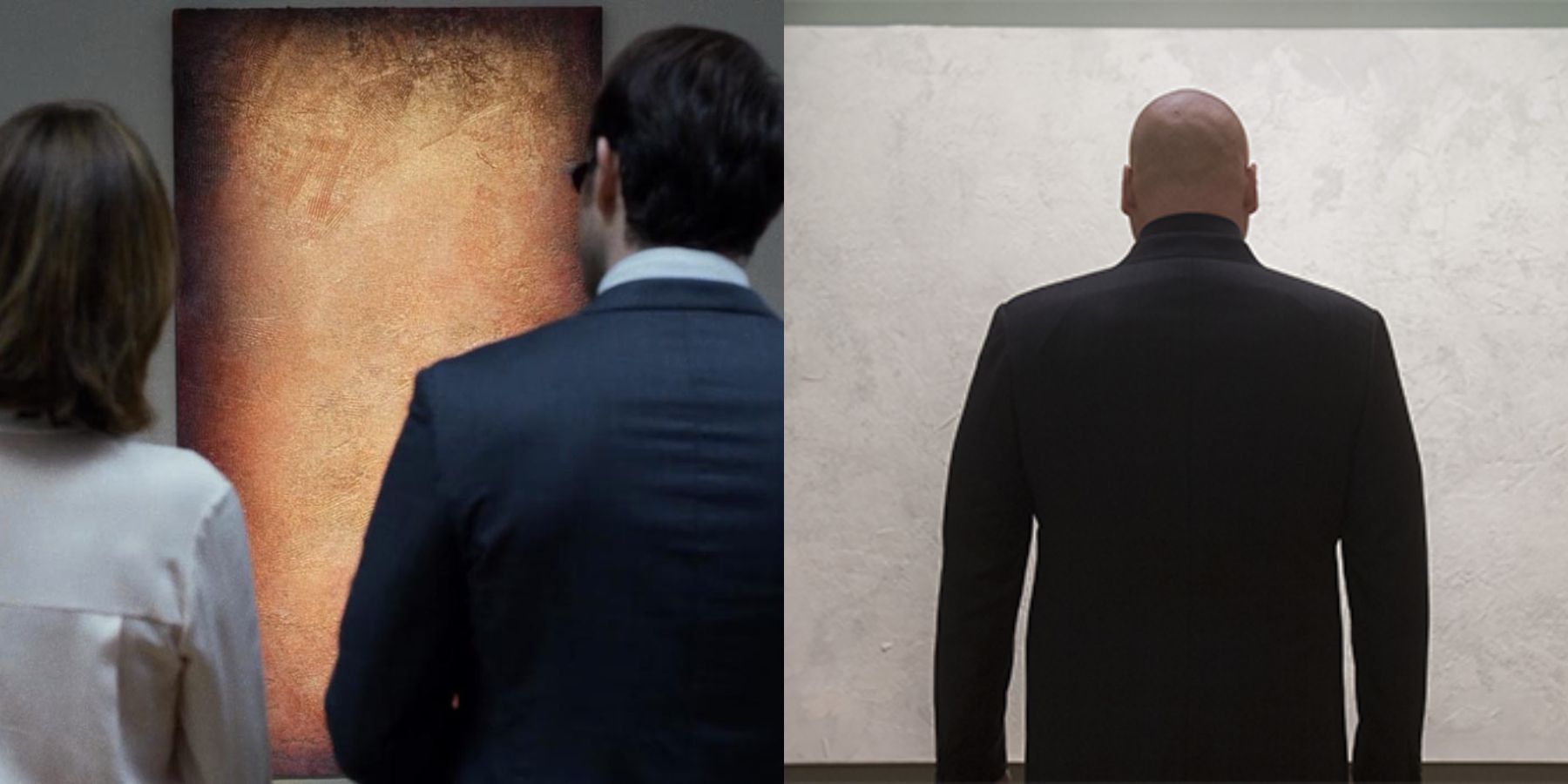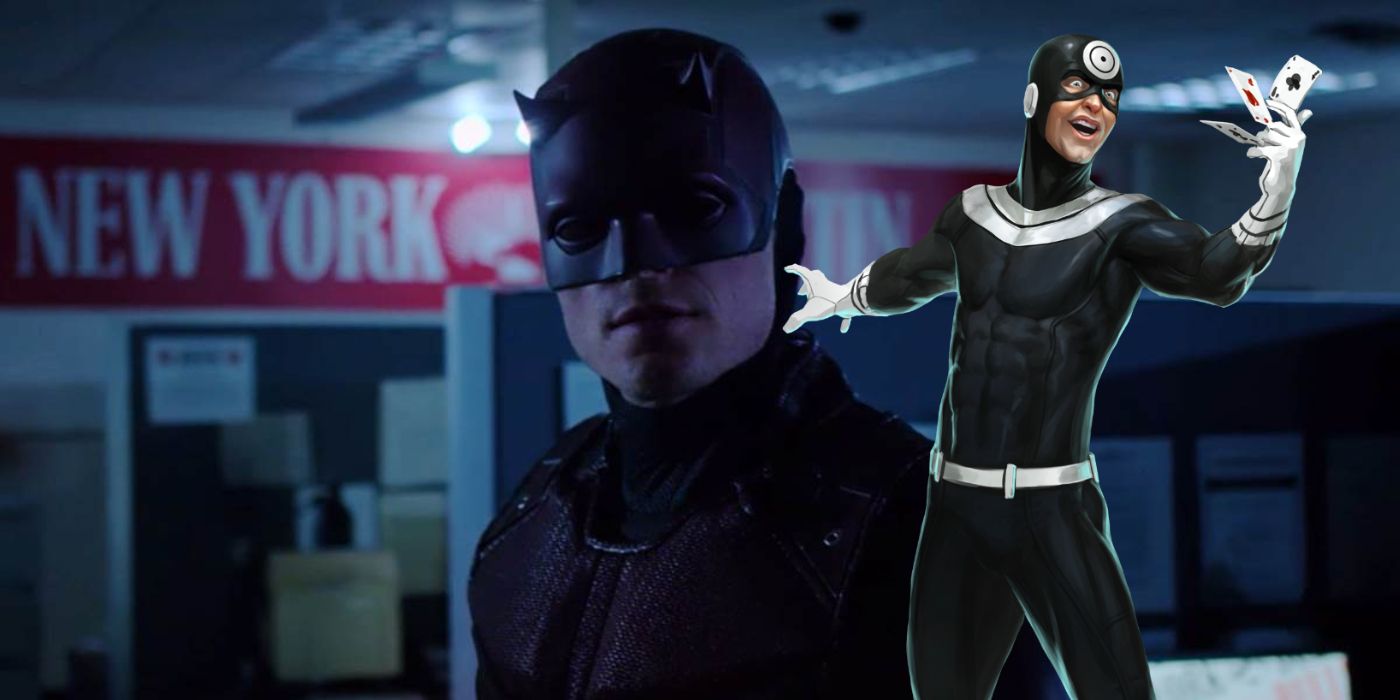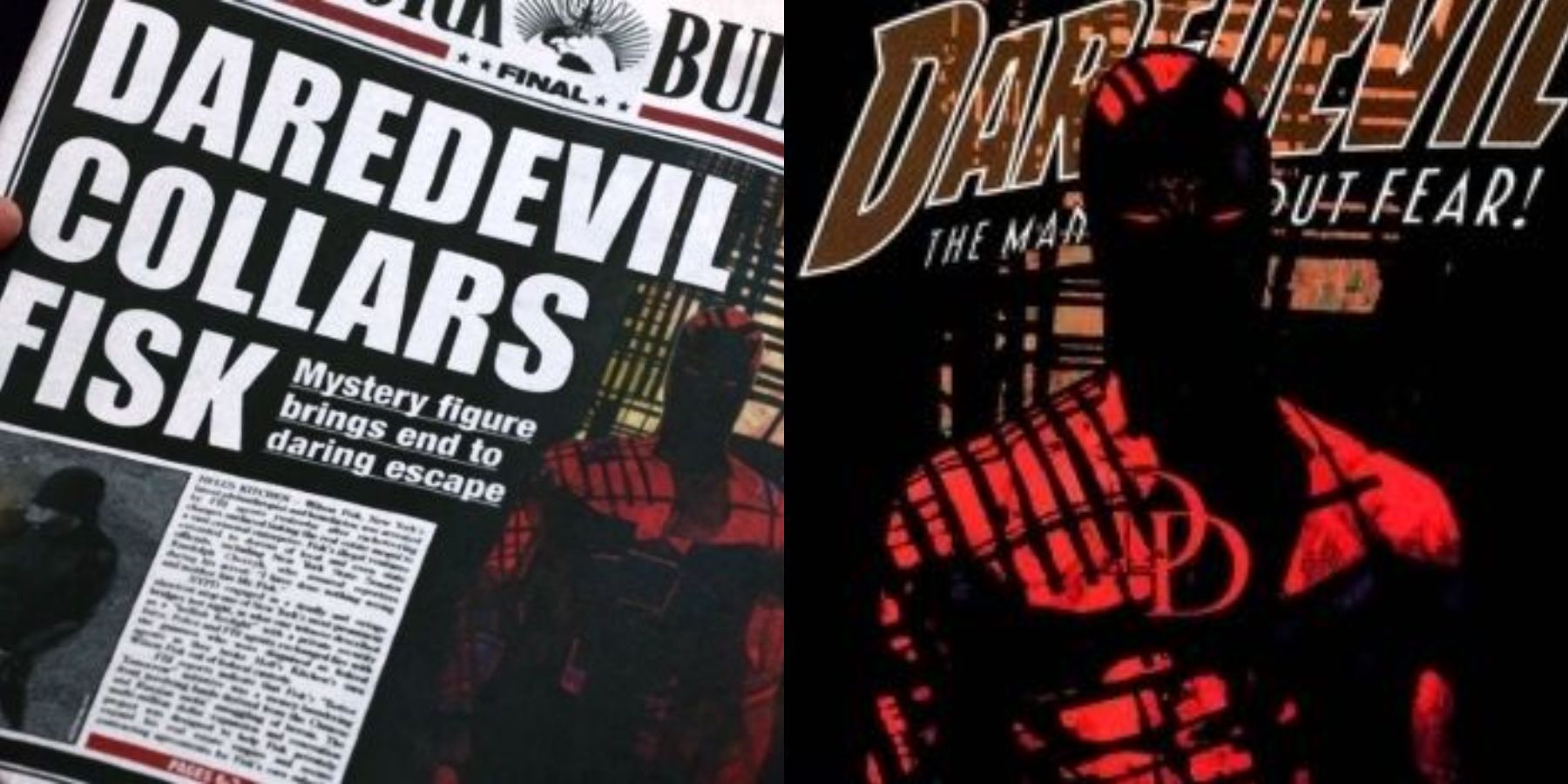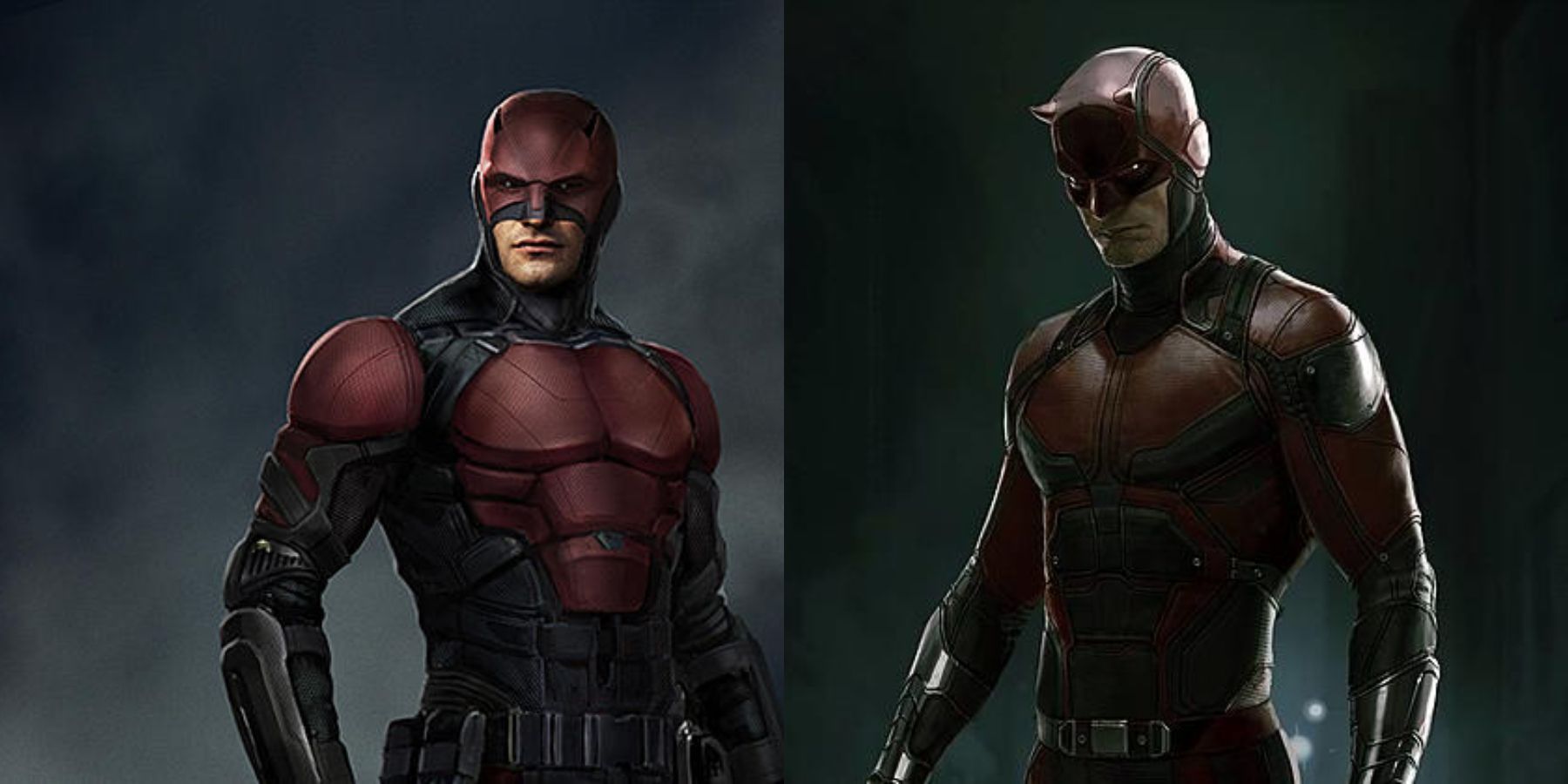Netflix's Daredevil had a three-season-run that revolutionized comic book television, presenting a more grounded and grittier version of the titular vigilante from Marvel comics. Matt Murdock serves as a lawyer by day and turns into a masked protector of Hell's Kitchen by night.
Every superhero needs a costume, so, initially, Murdoch (played by Charlie Cox) takes a DIY-approach donning plain black clothes, a look that came to be known as the "ninja costume." However, in need of a stronger material to dodge bullets, he sought the help of designer Melvin Potter. Potter builds him a costume that is light yet durable and gives him the look of a "devil," similar to his comic-book costume, though both costumes have become a part of the show's iconic legacy.
The Ropes In Season 3 Were Inspired By Muay Thai
Season three finds Daredevil in an extremely vulnerable phase. He loses his costume and identity and is on the brink of even losing his sense of moral justice. He returns to an all-black home-made costume similar to that of the first season. Additionally, he ties ropes around his arms, doubling the power of his punches in hand-to-hand combat.
As costume designer Liz Vastola explained, "the rope gloves are a reference to a Muay Thai rope-binding technique. The way we thought about it was in reference to how Daredevil was fighting this season." For the ones unacquainted with the concept, Muay Thai is a combat sport from Thailand that shares similarities with kickboxing, with many practitioners wearing hemp rope around their arms and forearms.
Potter's Costume Probably Has Traces Of Kevlar
After Daredevil's first violent encounter with the Punisher, Potter gives his costume an update with extra plating. He seems to add a certain carbon nanotube-based alloy to the helmet, calling it almost indestructible.
Fans have speculated the nature of the exact material used in Daredevil's suit, as it has never been explicitly stated. It's highly likely that from the looks of it that the suit is made of a combination of Kevlar and a light alloy. One of the costume concept designers for the show, Ryan Meinerding threw light upon this, stating that "the overall layout of that costume is really that it’s meant to look like a Kevlar vest with stuff underneath it. That’s what we were going for."
The Incredible Hulk's Daredevil Wore A Similar Costume
While Daredevil's minimalistic costume in the first season was praised as a very believable one, another on-screen avatar of Daredevil donned a similar black look. The Incredible Hulk TV series, starring Lou Ferrigno as the titular the green monster, spawned a TV film called The Trial of the Incredible Hulk.
The film, much like the series, might seem pretty tacky and outdated in today's time, but Daredevil's costume could have been much worse—like the leathery look that Ben Affleck sported in Daredevil's first live-action film. The vigilante was played by stage actor and singer Rex Smith.
Influences From The Man Without Fear
A significant inspiration for the aforementioned ninja costume was from the five-part comic miniseries Daredevil: The Man Without Fear, authored by the legendary Frank Miller and illustrated by John Romita Sr.
The series provides a deeper perspective into Daredevil's origin story. Its dark tones are easily comparable to the Netflix series. To fight Kingpin and his minions, the vigilante wears a black hoodie and ties a black cloth on his eyes. The costume was also featured as a special variant in the online RPG Marvel Heroes 2015.
Subtle Reference To The Original Yellow Costume
Matt's father Jack Murdock was a boxer who was killed by gangsters, a tragedy that haunts Matt for the rest of his life. The prizefighting boxer is shown as wearing robes with golden and red colors.
It's a subtle reference to Daredevil's costume colors from the comics. When first created by Stan Lee, the vigilante sported yellow tights and his appearance was compared to that of an acrobat or a wrestler. An origin limited series titled Daredevil: Yellow further showed Matt creating a costume out of his late father's boxing robe. His appearance was similar to his comic debut, sporting dominant shades of yellow with a hint of red.
Cotton Mesh Was Used For The First Costume's Mask
For the minimalist costume, the mask had no openings for the eyes. It makes sense as Matt Murdock was left visually-impaired after a childhood accident. Creating a mask for Murdock's all-black costume was a tricky activity for costume designer Stephanie Maslansky, as the mask had to have enough space for Charlie Cox to see through it.
"It’s made out of a cotton mesh. Layers and layers of it. It has to really conform to his head, but, at the same time, he had to be able to see through it," Maslansky explained in an interview.
Foreshadowing Through Paintings
Art plays a subtle and metaphorical role in Daredevil's first season, as Matt Murdock and Wilson Fisk aka Kingpin both stare at paintings that represent the colors they drape in the future.
At Vanessa's art gallery, Murdock stands next to a tall, brick-reddish painting that Vanessa describes to him. A blank white painting, on the other hand, holds Fisk's attention. It's his meeting with Vanessa here that leads to their toxic, romantic relationship. It's a poetic device to foreshadow Daredevil's red costume by the sophomore season. Fisk is also fitted in a comic-accurate white suit by the final season.
Bullseye In The Daredevil Costume Is A Reference To Born Again
Season three introduced Dex Poindexter and his transition to the mentally-unstable knife-throwing villain Bullseye. But, instead of the comic's Bullseye costume, he wears Daredevil's red suit on Wilson Fisk's orders to frame Daredevil for a few killings.
This plot element is a clear reference to one of Daredevil's most popular comic story arc, Born Again, that was again written by Frank Miller. In the story, Daredevil embarks on a self-styled incognito. To get him out of hiding, Fisk releases a patient from a mental institution. Dressing him up as Daredevil, he then orders him to kill Matt Murdock's legal partner, Foggy Nelson.
Alex Maleev's Iconic Cover Makes An Appearance
Back when Daredevil relied on a less armored look, he fought crime under no name. In the series, it's the press that dubs him as Daredevil, and he sticks with the name. A still from an episode in the first season features a cover story from a newspaper that reads "Daredevil Collars Fisk."
While a blurry photo features his original costume, an illustration is teased in the background as a speculative police sketch. Diehard fans of the character would recognize the costume and image as having been taken directly from Alex Maleev's artwork for Daredevil Vol 2 #60, one of the most iconic cover artworks for Daredevil.
Influence Of New York Architecture
Marvel's creative director and renowned comic book artist Joe Quesada found Daredevil's red costume's concept art (by Ryan Meinerding) to be influenced by New York just like the character.
As Quesada explained further, "...if you look very, very closely at some of the ways the armature is attached to the costume, you can actually see rivets... I told Ryan, we should lean into that a little bit because that is so quintessentially New York and how the city itself is constructed."

